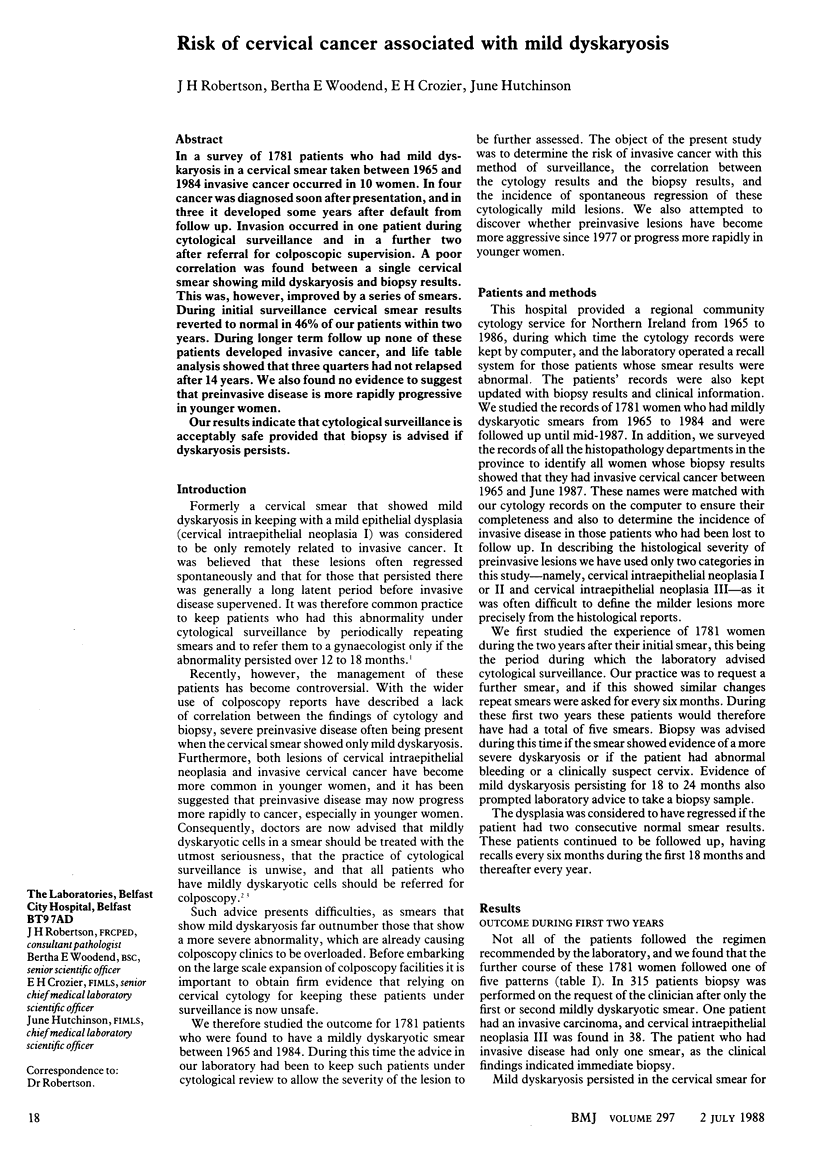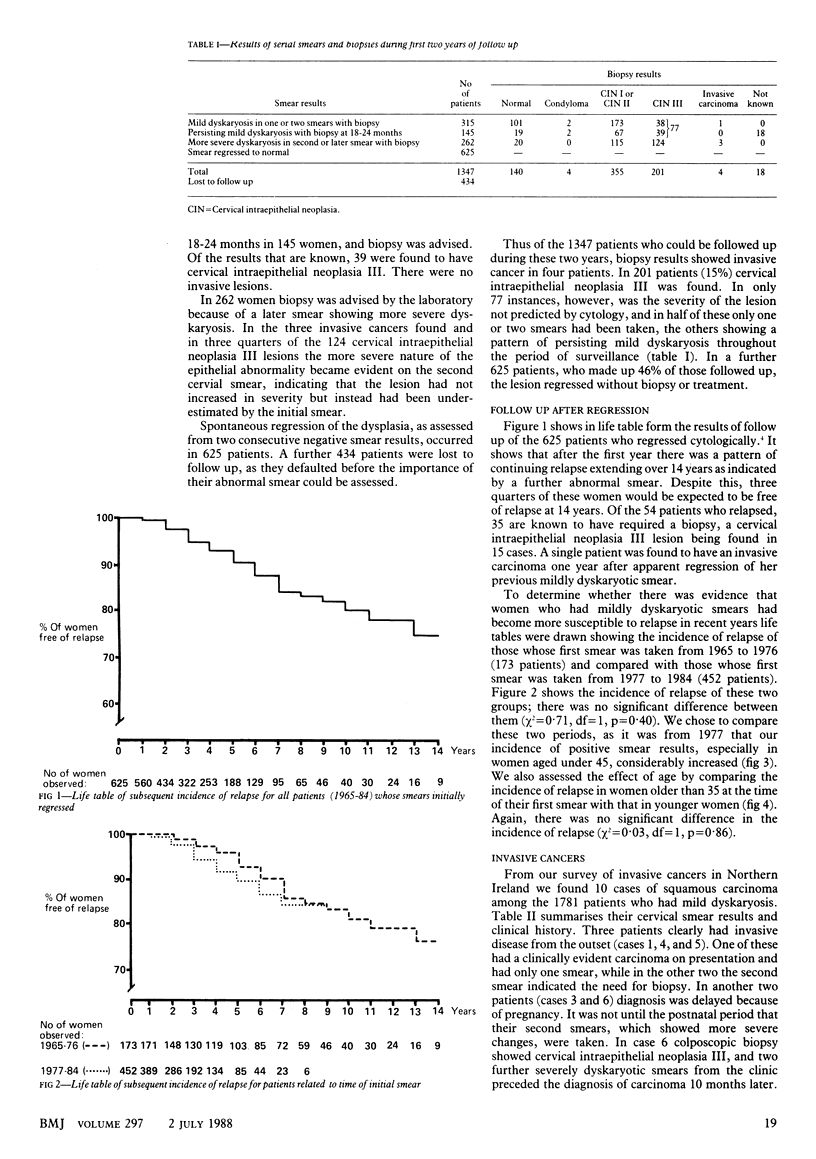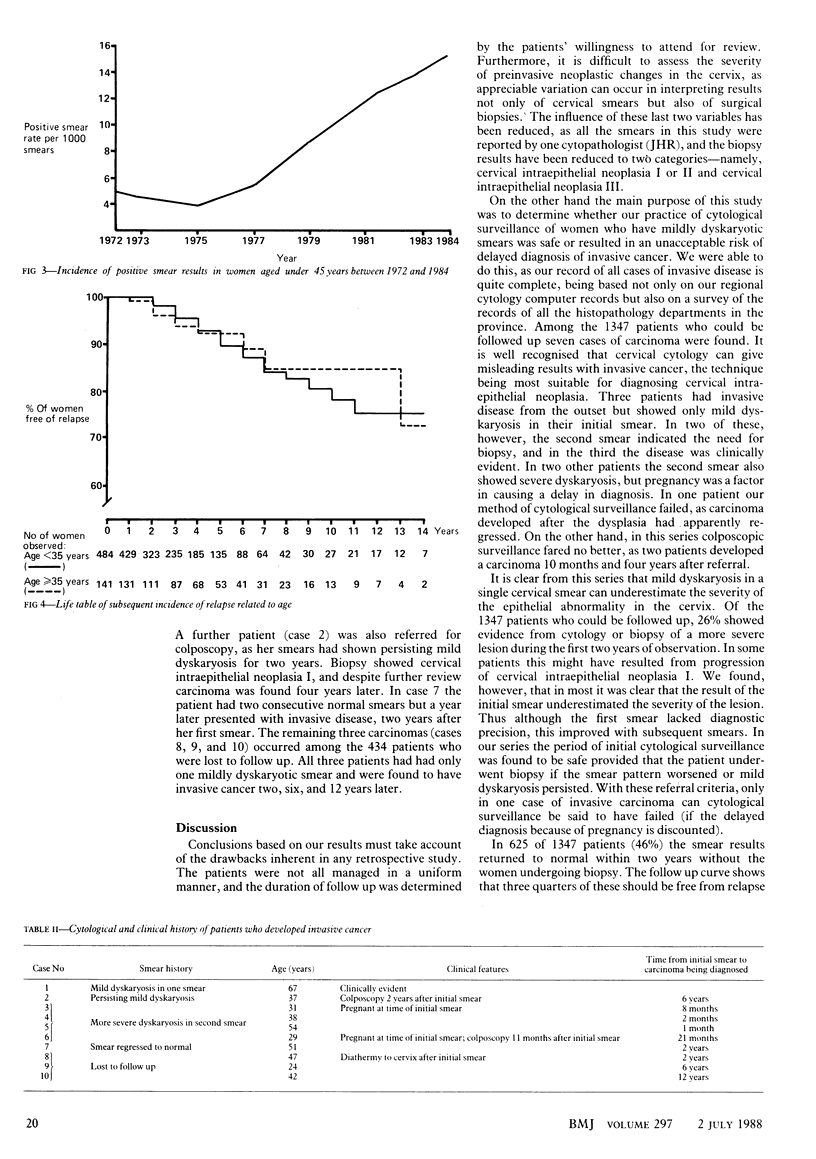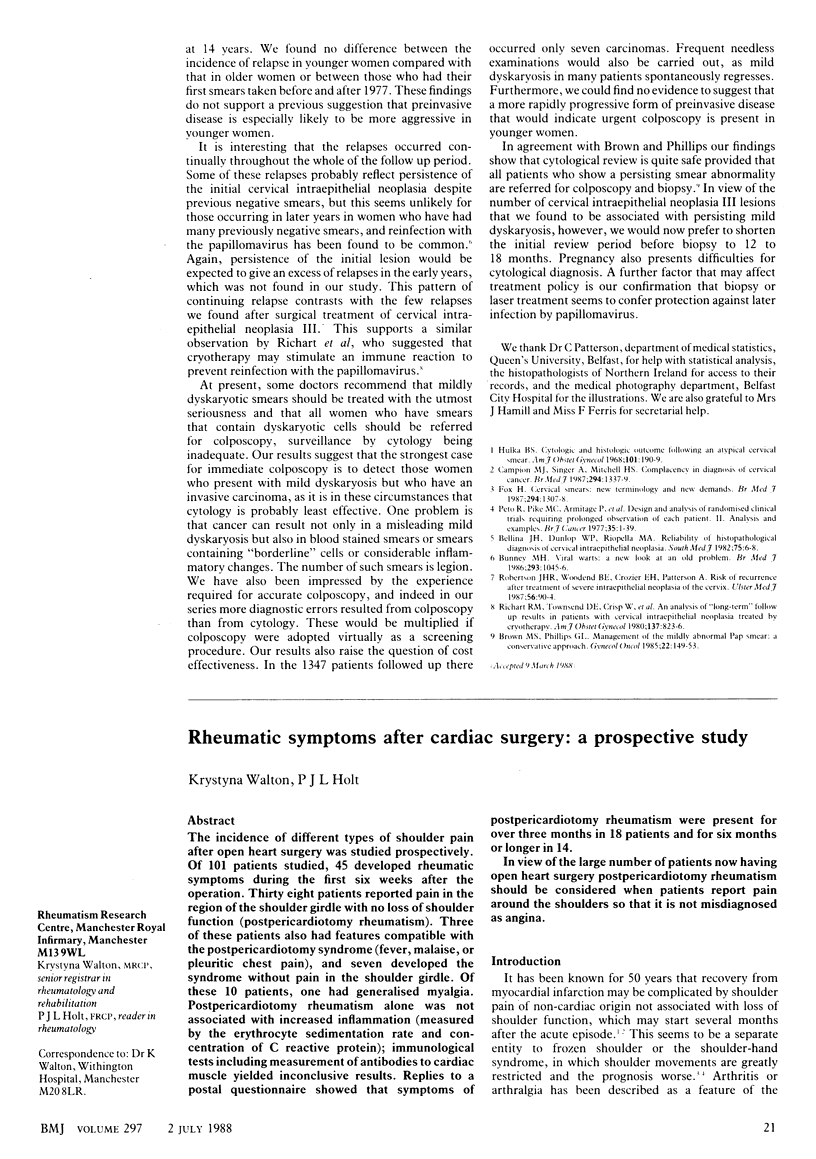Abstract
In a survey of 1781 patients who had mild dyskaryosis in a cervical smear taken between 1965 and 1984 invasive cancer occurred in 10 women. In four cancer was diagnosed soon after presentation, and in three it developed some years after default from follow up. Invasion occurred in one patient during cytological surveillance and in a further two after referral for colposcopic supervision. A poor correlation was found between a single cervical smear showing mild dyskaryosis and biopsy results. This was, however, improved by a series of smears. During initial surveillance cervical smear results reverted to normal in 46% of our patients within two years. During longer term follow up none of these patients developed invasive cancer, and life table analysis showed that three quarters had not relapsed after 14 years. We also found no evidence to suggest that preinvasive disease is more rapidly progressive in younger women. Our results indicate that cytological surveillance is acceptably safe provided that biopsy is advised if dyskaryosis persists.
Full text
PDF



Selected References
These references are in PubMed. This may not be the complete list of references from this article.
- Brown M. S., Phillips G. L., Jr Management of the mildly abnormal Pap smear: a conservative approach. Gynecol Oncol. 1985 Oct;22(2):149–153. doi: 10.1016/0090-8258(85)90020-4. [DOI] [PubMed] [Google Scholar]
- Bunney M. H. Viral warts: a new look at an old problem. Br Med J (Clin Res Ed) 1986 Oct 25;293(6554):1045–1047. doi: 10.1136/bmj.293.6554.1045. [DOI] [PMC free article] [PubMed] [Google Scholar]
- Campion M. J., Singer A., Mitchell H. S. Complacency in diagnosis of cervical cancer. Br Med J (Clin Res Ed) 1987 May 23;294(6583):1337–1339. doi: 10.1136/bmj.294.6583.1337. [DOI] [PMC free article] [PubMed] [Google Scholar]
- Hulka B. S. Cytologic and histologic outcome following an atypical cervical smear. Am J Obstet Gynecol. 1968 May 15;101(2):190–199. doi: 10.1016/0002-9378(68)90187-7. [DOI] [PubMed] [Google Scholar]
- Peto R., Pike M. C., Armitage P., Breslow N. E., Cox D. R., Howard S. V., Mantel N., McPherson K., Peto J., Smith P. G. Design and analysis of randomized clinical trials requiring prolonged observation of each patient. II. analysis and examples. Br J Cancer. 1977 Jan;35(1):1–39. doi: 10.1038/bjc.1977.1. [DOI] [PMC free article] [PubMed] [Google Scholar]
- Richart R. M., Townsend D. E., Crisp W., DePetrillo A., Ferenczy A., Johnson G., Lickrish G., Roy M., Villa Santa U. An analysis of "long-term" follow-up results in patients with cervical intraepithelial neoplasia treated by cryotherapy. Am J Obstet Gynecol. 1980 Aug 1;137(7):823–826. doi: 10.1016/0002-9378(80)90892-3. [DOI] [PubMed] [Google Scholar]


